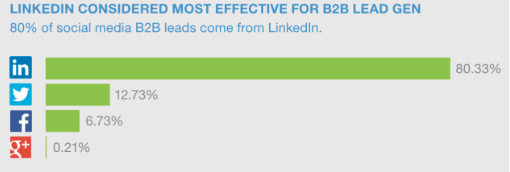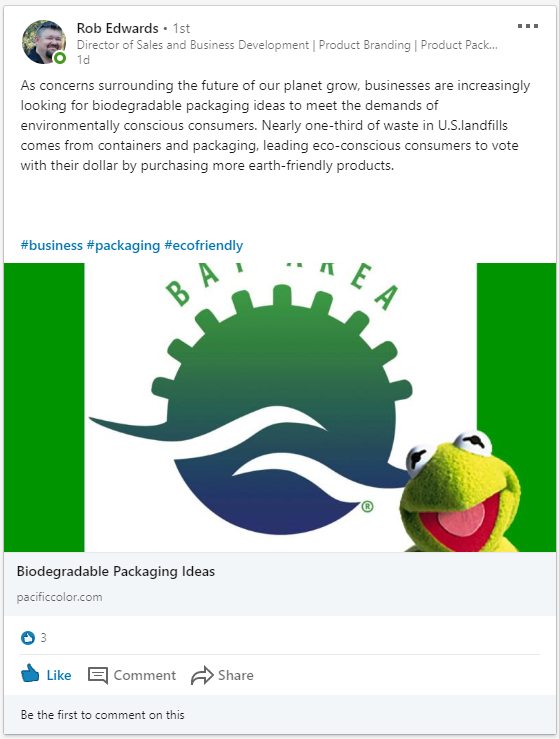Part 2: Tips for Increasing Leads for your Manufacturing Company

This is Part Two of our four-part series focused on Manufacturing Marketing.
Expect to learn tips for increasing leads at your manufacturing company, as well as LinkedIn tactics and content targeting strategies.
Click on any topic below to be taken to that section.
- Your Website
- Google Search
- Reputation Management
Part 2: Increase Exposure
- LinkedIn Communications – Educate about challenges
- LinkedIn Communications – Provide guidance on how your solution solves problems
- LinkedIn Remarketing – Remind
- Targeted Google Ads
- Display / Awareness
- Google Remarketing
- Visitor Tracking
- ROI
Part 4: Search Engine Optimization (SEO)
- Keywords – what are people searching for?
- Content
- Other Factors of Success
Part 2: Increase Exposure
LinkedIn Communications – Educate your Target Market
It can be difficult to reach your target market of buyers, engineers, managers and facilities support folks, especially when you want to educate them on your products and services and they don’t know you. One way to get their attention is to leverage your sales leaders, business leaders and/or top technical team to communicate with prospects via LinkedIn.
No one likes to be sold to all the time. Most people like to read about things that interest them. If they receive information and ideas that improve their day to day jobs, a natural trust between them and the writer is established. People also like to share helpful information with others. It is a natural aspect of social media.
If you are wondering if LinkedIn is an appropriate platform for manufacturing companies, consider these recent statistics in a 2019 LinkedIn fact sheet report by the Hootsuite.
- 154 million Americans have LinkedIn profiles (590 million world-wide)
- 50% of Americans with a college degree use LinkedIn
- 45% of LinkedIn users are in Upper Management
- 91% of executives rate LinkedIn as 1st choice for professionally relevant content
These statistics represent what we are seeing when we help professionals communicate on LinkedIn.

Source: Sophisticated Marketer’s Guide to LinkedIn

When creating LinkedIn posts, we utilize some of the following ideas:
- Make the topic relevant and interesting
- Find a unique way to present the information
- Point out why the topic is important to you and others
- Add #hashtags that already exist on the topic to join the conversation or add new ones you would like to promote
- Add a call to action, though not every post needs one
- Offer a link to a blog if more information exists
- Implement a colorful image to support the information
Leverage Content You Create
It might take weeks or months to create content you wish to post online. Why spend all of this time creating content to only use it once? Multiple uses of your content extends its lifespan and ensures it gets seen by a wider audience.
If you consider your own use of LinkedIn – frequency of visits, length of time per session, day of week, time of day – you can see that there are many variables in whether or not your target market sees your posts.
Now, think about how many newsletters and company updates you receive. How many are modified advertising that try to sell, sell, sell? After a while, readers unsubscribe or automatically delete those emails, even if they contain relevant information. Quality of message and ease of reading are critical factors of emails. So why not utilize your company’s LinkedIn posts as email information?
Does your company utilize Twitter? Do you have more than 20 followers? As with other forms of social media, if there are no followers, posts tend to disappear into the wind. But, if you do have followers, coordinate your posts and links from LinkedIn to Twitter. And, although Facebook is not usually a Business to Business (B2B) lead generator, posts can be reused if your follower list is relevant.
Now, back to thinking about your own LinkedIn tendencies. Posting the same article on LinkedIn more than once is NOT likely to upset people. Doing this allows you to reach a wider audience, select different time zones and post similar content. By tracking post likes and interactions based on topics, time of day and day of week, you can learn how to optimize information and posting activity!
Finally, relevant posts can help your website’s search engine optimization (SEO). Good titles, content, meta-tags and a couple of links to relevant pages on the site that support or implement solutions related to the post can help your overall SEO.
Remarketing
Remarketing is one of the most powerful tools a manufacturing company can use. With remarketing, you can reach people who have found your company’s website, as well as those you have met personally. Many platforms use pixels or cookies to identify the computers that visit a site.
Google offers remarketing for search ads and display ads. Let’s say that you shop on a car website for a new vehicle. After this, you notice that you’re being shown ads for cars. It may seem spooky at first, as if you’re being followed, but the ads are targeted to you based on your search history.
LinkedIn and Facebook remarketing work in the same way, allowing businesses to display ads based on visits. You can also target individuals to see ads via their email address, such as those you collect at trade shows. You can even target ads to appear via “matched audiences” by industry and company name.
Search remarketing is used to increase your search ad frequency on sites like Google Search. By integrating your Google Analytics visitor information with Google Ads, audiences of your visitors or “similar” visitor audiences can be constructed to show your search ads more frequently. This is a lot less “spooky” as people expect to see specific, related search ads based on keywords and topic searches. Increasing frequency suggests that you are a more aggressive search advertiser.
Tracking
We find that many manufacturing companies put money and effort into new websites, and even ads and email marketing, but fail to track visitors, calls, spending and conversions. Tracking is not that difficult to implement, and it provides management with key information on reach and effectiveness.
Start with Google Analytics – a free tool from Google. The traditional Google Analytics code is effective for most small business websites. If your site is more complex (i.e., multilingual) or has lots of videos, downloads and sub-domains, then Google Tag Manager may be a more informative tool to implement.
Google Analytics provides tons of data, so much that it can get overwhelming! This is why it’s useful to establish a handful of meaningful metrics (like in manufacturing) to gain a high level understanding of website health, utilization and trends of traffic, pages viewed, origin of visitors and time spent on the site.
Analytics integrates seamlessly with Google Ads data when you run ads. This allows for setting and sharing goals (like contact forms), establishing audiences and understanding the value of your advertising.
The next level of tracking has to do with caller source and visitor source. Many companies make one phone number publicly visible so the source of the calls are indistinguishable. However, based on your target market, some prefer to call (buyers), some prefer emails (engineers) and some prefer form submission.
Using visitor tracking, usually by IP address lookup, you can see many of the companies that are stopping by your site. If you participated in a trade show, ran ads or performed other marketing, site visitor tracking can help indicate follow up visits and gauge interest for additional contact by sales or engineering.
There are many tools available to track online activities. By sending the information into a CRM or common database, lead generation effectiveness can be determined.
Lead generation is the life-blood of most manufacturing companies. Too many feel they know “everyone” in the market and don’t need to leverage the internet, websites, social media and ads. Usually, they find lots of missed opportunities.
Don’t miss your new business opportunities! Call us any time to discuss ideas to help your manufacturing company succeed online.
Next steps
If you have a great website design and are taking advantage of LinkedIn, dominate Google search and have a stellar online reputation, it’s time to look at Part 3: Online Advertising. In this section, we discuss how to leverage Display, Search and Remarketing advertising to accelerate your growth.
Let Us Help You Get Great Results
Request a Competitive Analysis of Your Site and Let’s Get Started Growing Your Business Online!